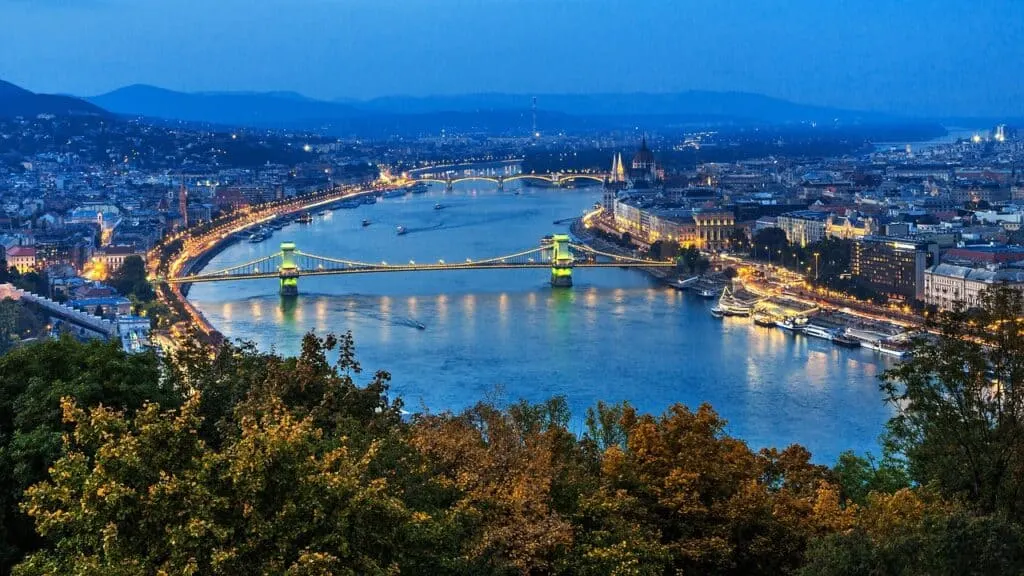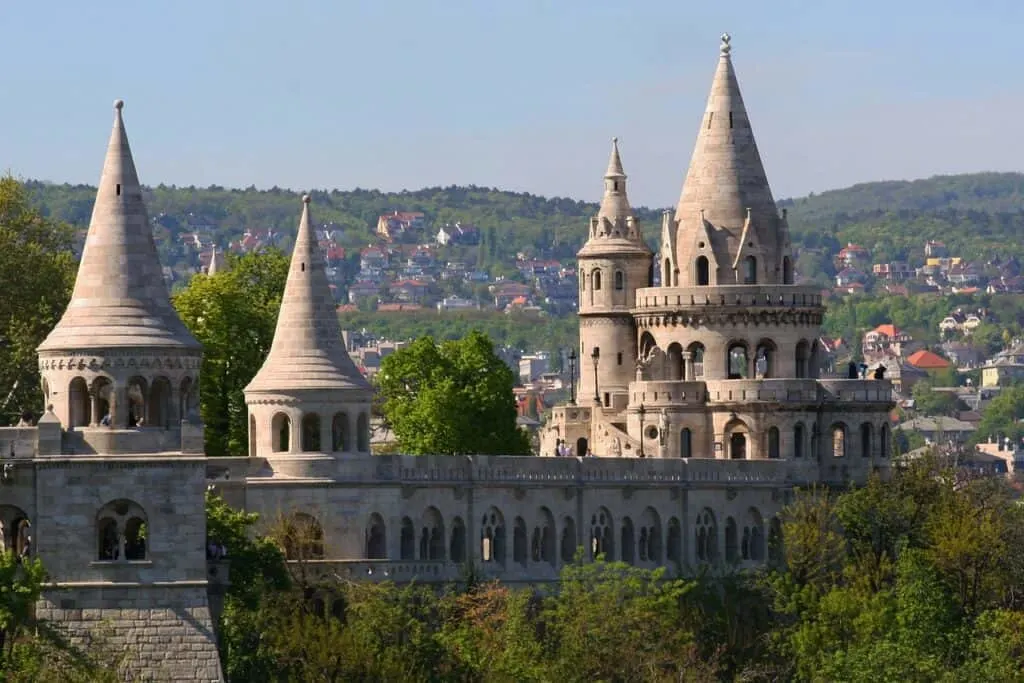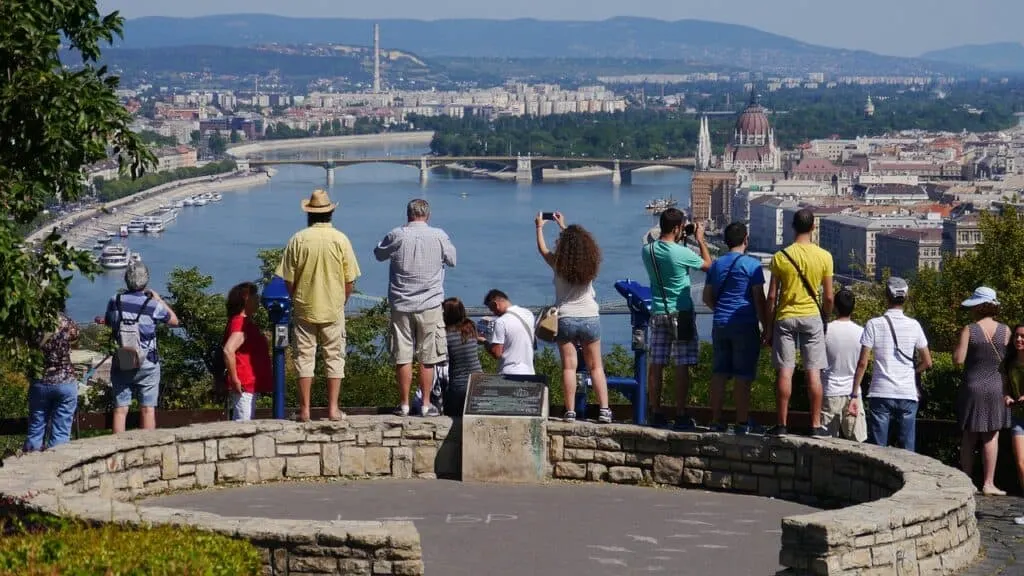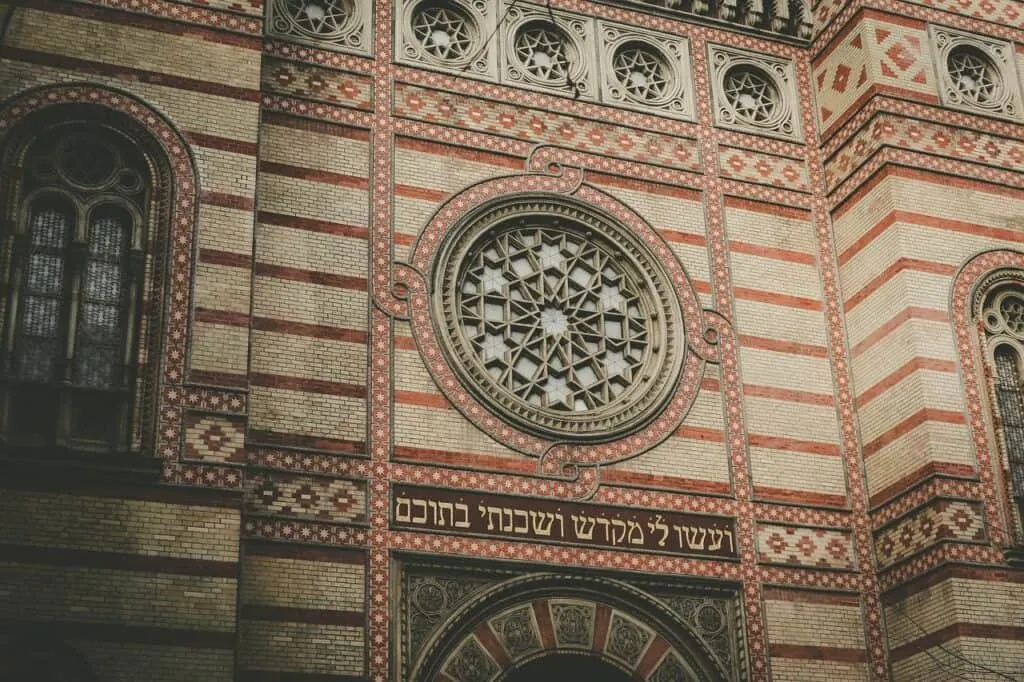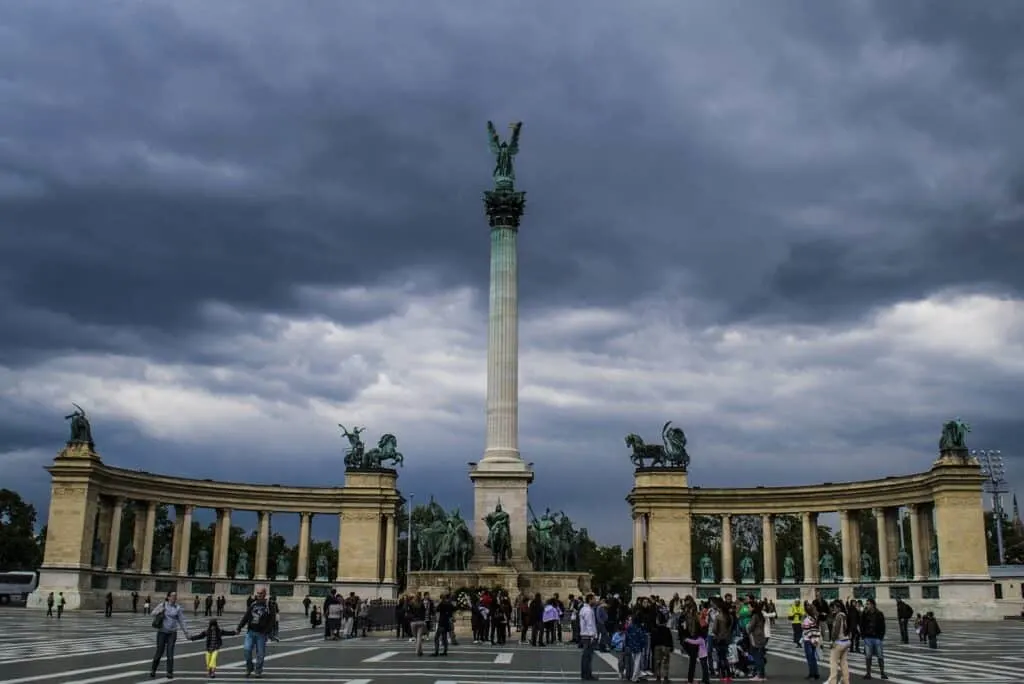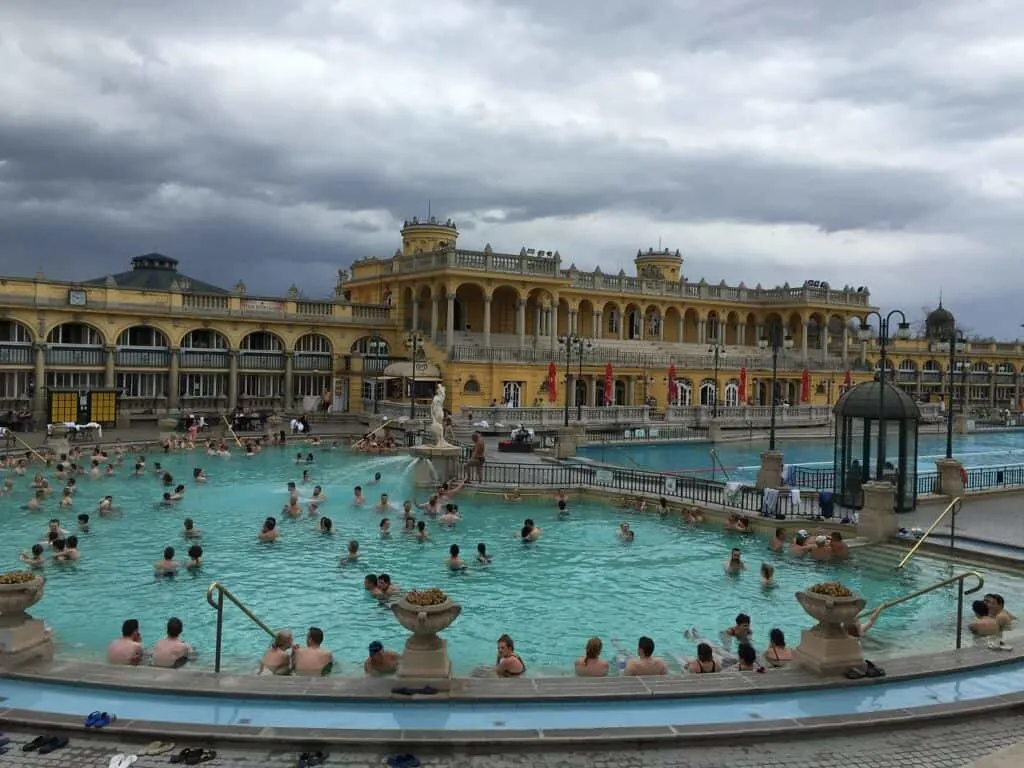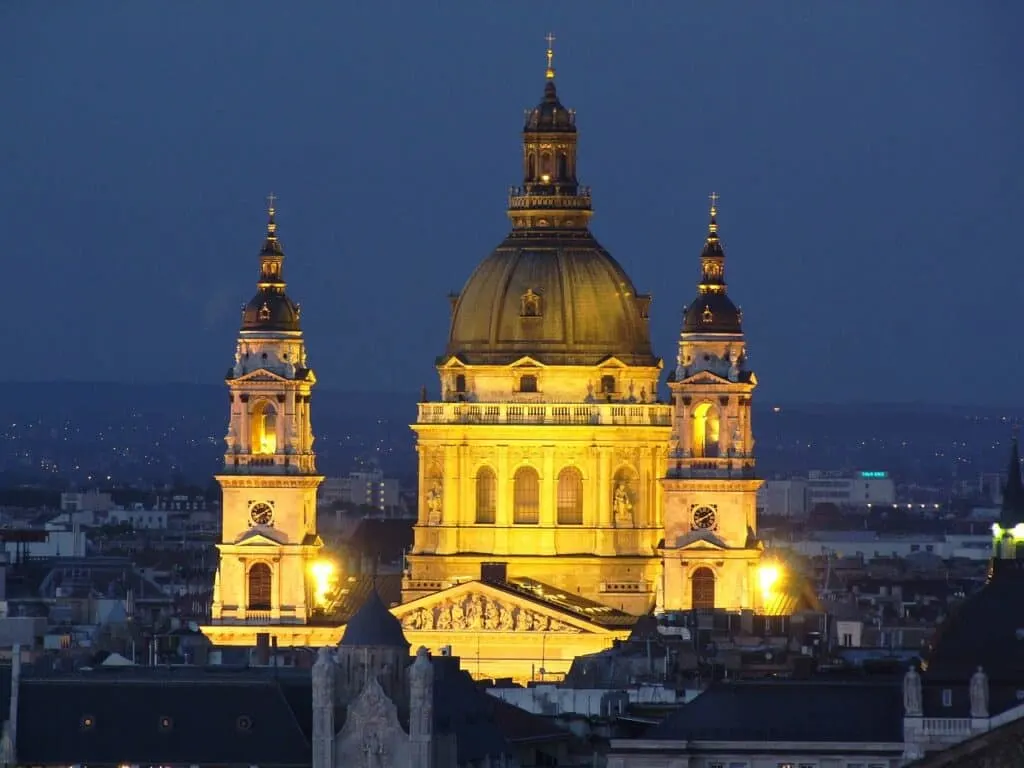Whether you are a seasoned traveler or an initiate in the art of exploration, you would do yourself a disservice by not visiting Budapest. Known as one of the most culturally rich and aesthetically beautiful cities in Europe, it offers myriad attractions to delight one’s senses and important Hungarian landmarks to become acquainted with. Bursting with the likes of UNESCO heritage sites, majestic Art Nouveau thermal baths, and striking architecture, Hungary’s capital city is a feast for the eyes and the soul.
This article contains affiliate links and/or references to our advertisers. We may receive compensation when you click on or make a purchase using these links.
Table of Contents

Cleft in two by the mighty Danube river, both the Buda and Pest sides of the city are overflowing with historical monuments that you can peruse by foot, crossing from one side to the other by walking along the Szechenyi Chain Bridge that connects the two.
The Pest side of the River Danube bank includes the simply magnificent Hungarian Parliament, Saint Stephen’s Basilica, the historic Heroes’ Square, and the fairy-tale sight of Vajdahunyad Castle, while the Buda side offers beautiful landmarks such as Buda Castle, Fisherman’s Bastion and Matthias Church.
With so much to experience in this charming city, let’s explore the most famous landmarks and attractions of Budapest, which make it such a popular tourist destination in Central Europe.
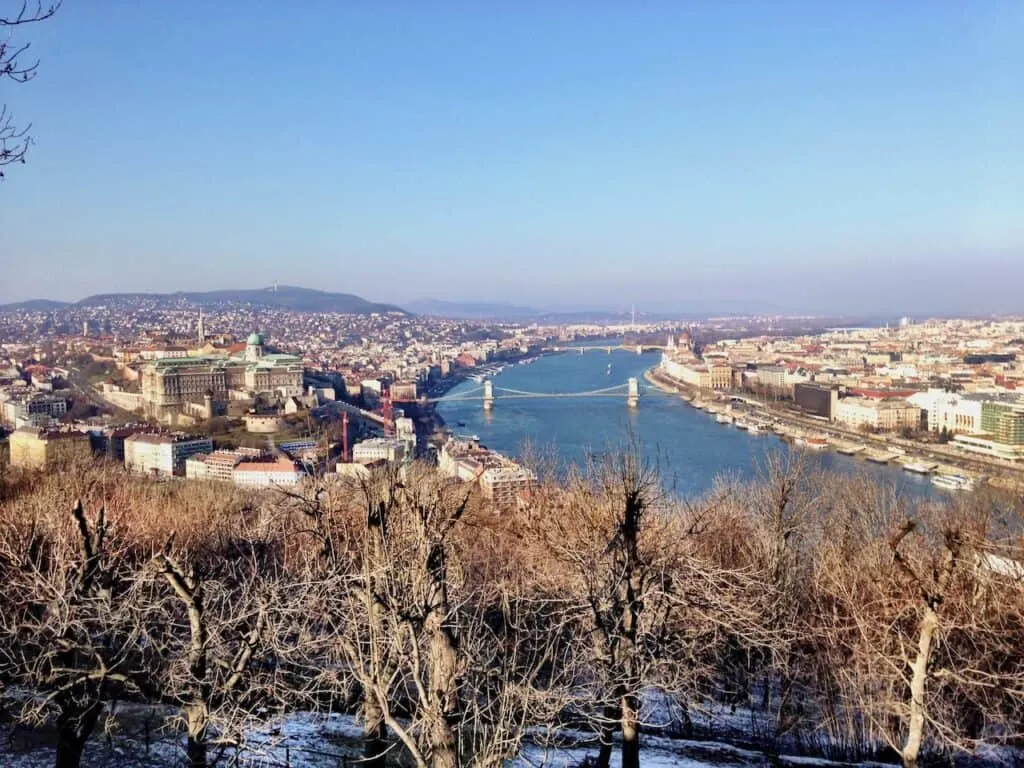
Buda Castle District: Home to Several Distinctive Landmarks in Budapest
One of Budapest’s top attractions is the Buda Castle District, located on top of a hill on the Buda side. Once a fortress for the Hungarian kings against invaders, it was heavily damaged in WWII. The structure was rebuilt and today houses the Hungarian National Gallery, the Budapest History Museum, and Hungarian National Museum.
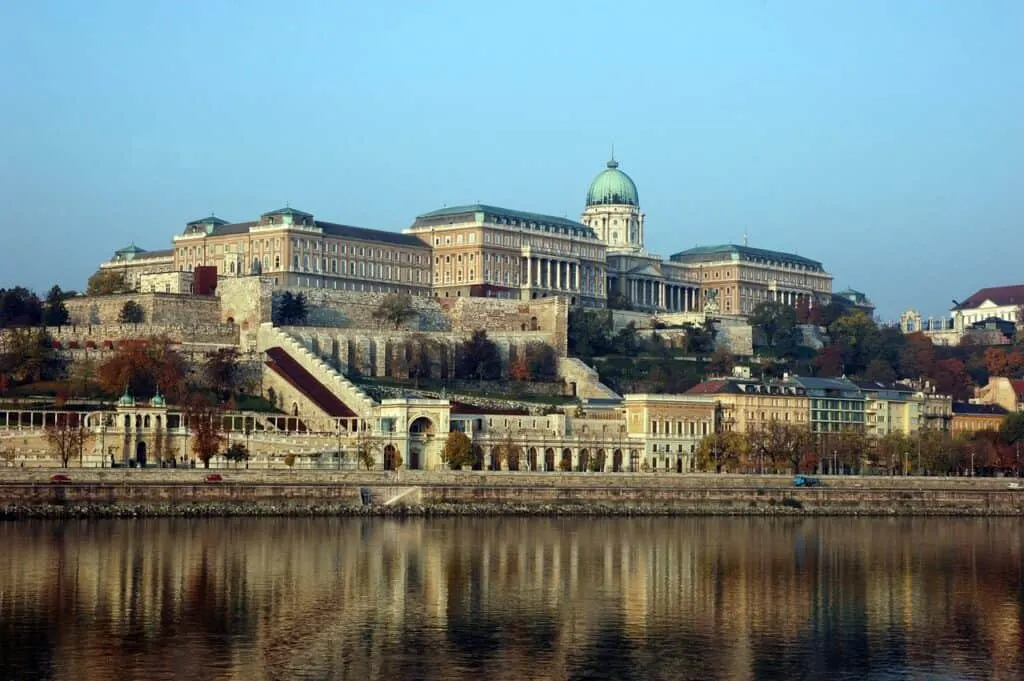
The easiest and most picturesque way to reach the Castle District is via the funicular, which allows for Instagram-worthy photos of the Danube and Pest side of the city.
The historic Castle district is part of a UNESCO World Heritage Site and has an old-world charm, thanks to its cobbled streets, quaint houses, and churches. The Hungarian National Gallery is home to the largest collection of Hungarian art and is a great place to get familiar with Hungary’s prestigious artists and their work across different periods.
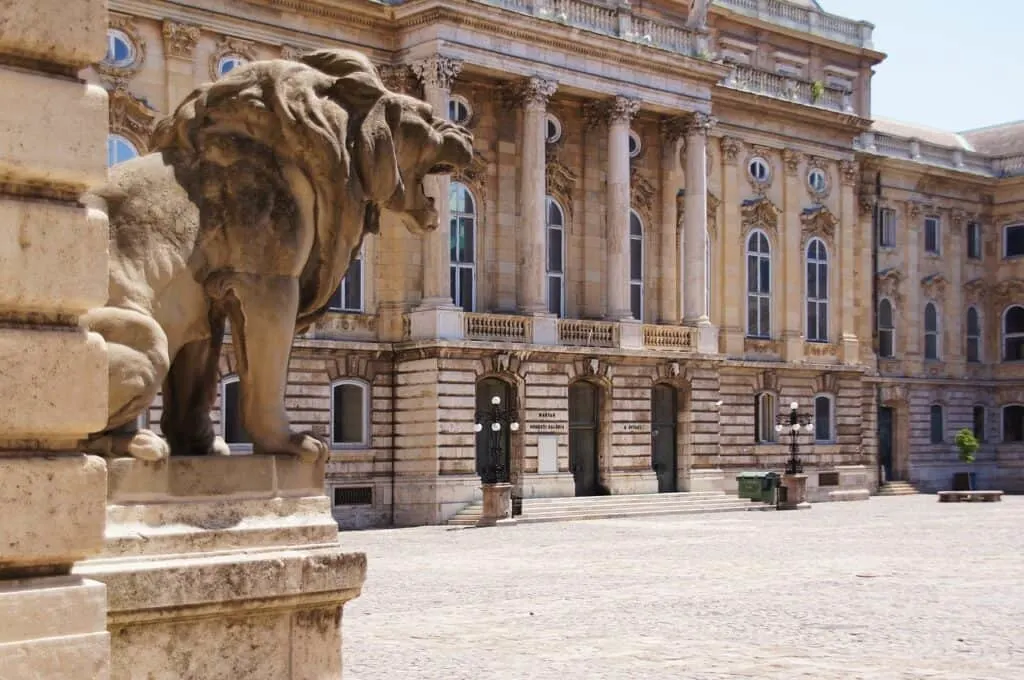
If you want to understand the day-to-day life of a Hungarian and what a traditional home looks like, you can add the History Museum to your itinerary. This Museum also houses artifacts and displays from as early as the Middle Ages to the 18th and 19th centuries.
You can always book a guided tour or rent audio guides for a more immersive experience.
Matthias Church
This beautiful church is another jewel in Budapest’s cache of stunning architecture. The exterior boasts mosaic tiles, while the interiors are stunning, with soaring pillars, ornate paintings, and spectacular stained-glass windows.
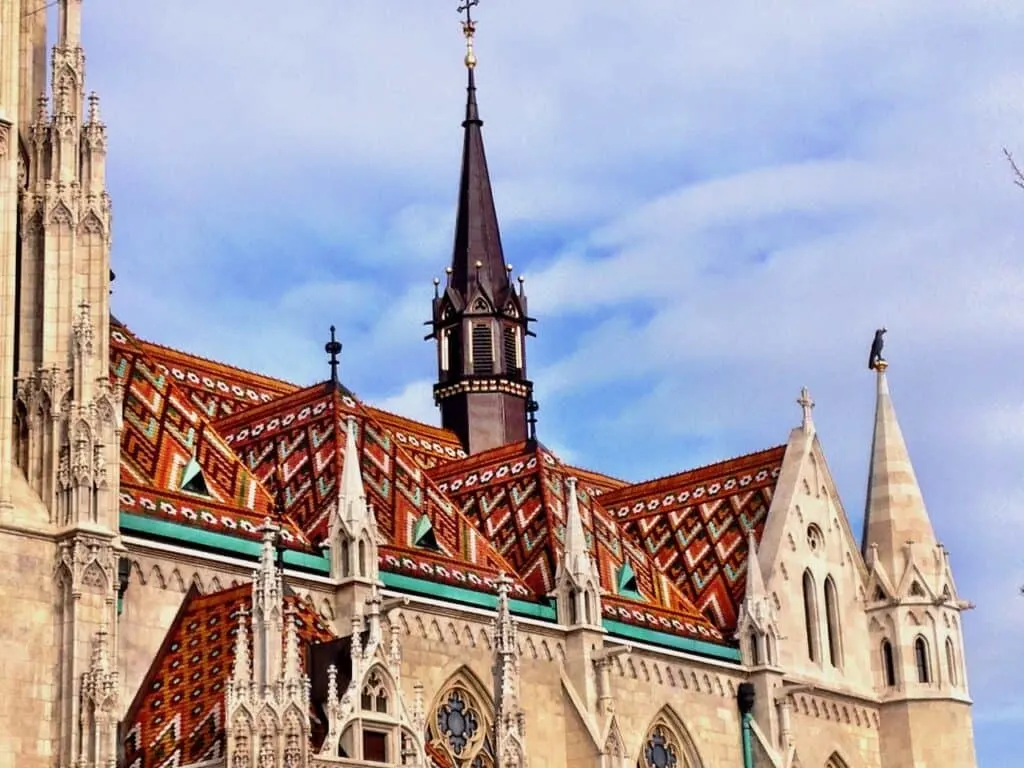
Matthias Church has a very colorful history, as it witnessed a myriad of rulers conquer the city and underwent modifications accordingly. Starting off as a Catholic sanctuary in the 11th century, it evolved into a church before it was converted into a mosque during the Ottoman empire’s reign in the 16th century.
At the end of the 17th century, the Holy Roman empire seized the city and commenced the reconstruction of the church. With so many influences and changes, Matthias Church was harmonized with its neo-Gothic look at the end of the 19th century.
It is no surprise that this historical landmark is a cultural hotspot, which hosts many concerts and events for the community as well as visitors. Surrounded by the Holy Trinity Square and the Fisherman’s Bastion, the church is a must-visit attraction where you can spend the day roaming around truly magical surroundings.
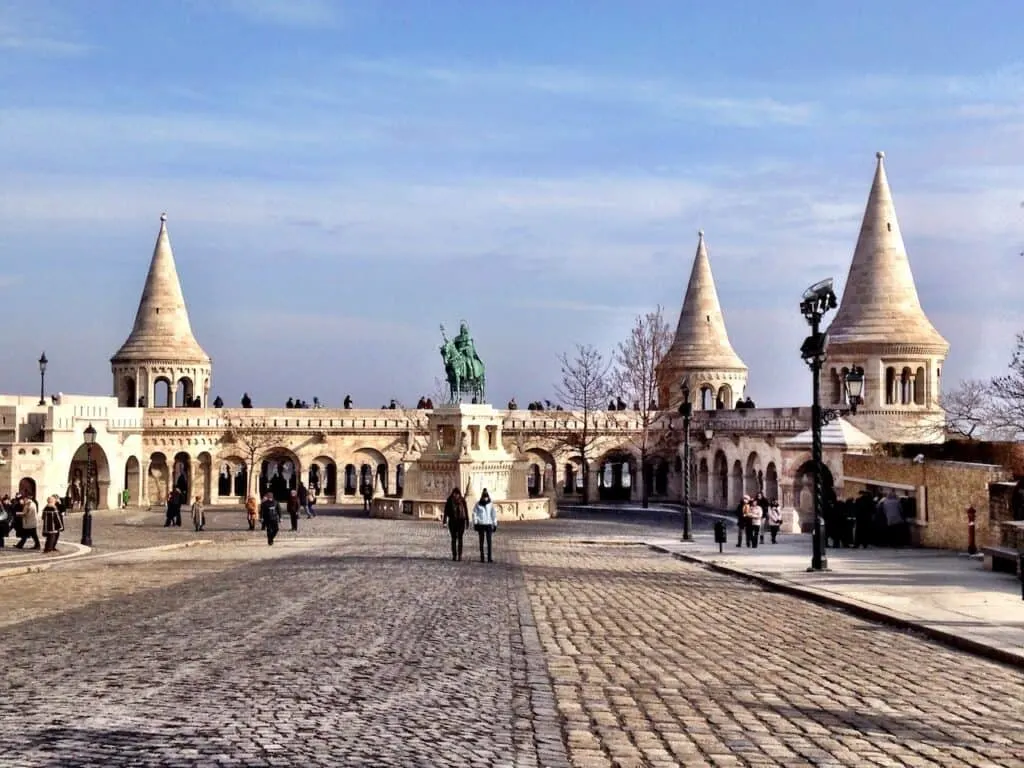
Note: See our full post on Matthias Church and Fishermen’s Bastion.
Fishermen’s Bastion
After spending time admiring the neighborhood around Matthias church, a short walk will lead you to the Fishermen’s Bastion, where you will be treated to unparalleled panoramic views of the city of Budapest and the River Danube. With its turrets and archways, the terrace of the Bastion looks like it is straight out of a fairy tale.
Built in 1901, Fishermen’s Bastion features at its center the statue of Hungary’s first king, St Stephen. This viewing platform is hugely popular amongst tourists as it is a great place for photos. If you visit at dusk, you can enjoy the whole city lit up in all its glory.
Book your stay near these beautiful landmarks:
Gellért Hill
If you are looking for a top spot in order to take in the best views of Budapest and its famous landmarks, then head to Gellert Hill, the city’s highest hill, which overlooks the Danube and all the bridges that connect the Buda and Pest sides of the city.
From this vantage point, you can take amazing pictures of Budapest’s major landmarks, such as the Parliament, Chain Bridge, Buda Castle, and Matthias Church. You can also admire the Liberty Statue, a monument erected to honor all those who had forfeited their lives for the independence and prosperity of Hungary.
As you explore the hill, you will find on the southeastern side the almost century-old Cave Church that the Pauline monks constructed after being in exile for hundreds of years.
The trek up Gellert hill can be challenging, but the views of Budapest’s historic monuments during the day and at night make it worth the climb.
Book your accommodations convenient to Gellert Hill:
Margaret Island
If the hustle and bustle of the city and tourists becomes overwhelming and you are looking to take a break in a tranquil oasis, then look no further than Margaret Island. Located between the Margaret and Árpád Bridges on the Danube River, there are many ways to get to the island: you can take the tram, use a boat cruise or cross the Margaret Bridge on foot.
Margaret island is equally popular amongst locals and tourists as it is home to many attractions and activities, including a tranquil Japanese garden, ruins of a Medieval church, swimming pools, and even a mini zoo. There are biking and running lanes that circle around the island and small cafes and eateries dotted around the area for when you feel hungry. If walking around the island is not your preference, then you can get on board a tourist shuttle that shows you all the attractions.
A visit to Margaret Island cannot be complete without witnessing the dancing musical fountain, especially at night when it is illuminated. It’s a great way to spend a couple of hours in Budapest to recharge your batteries so you can also experience the beauty of the city at night.
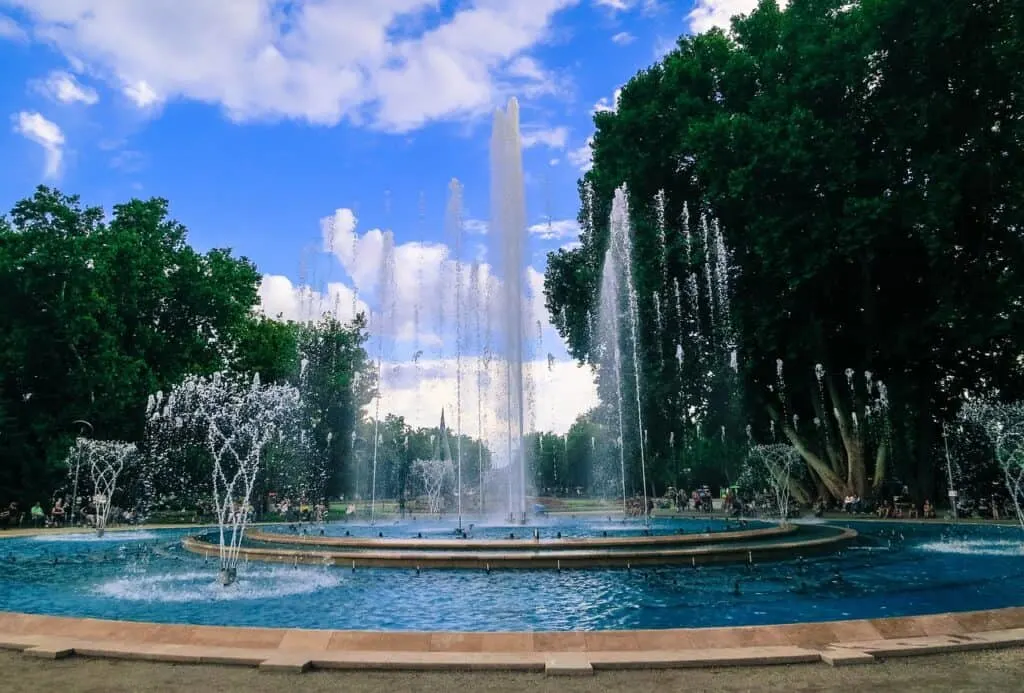
For an extra special view of the Matthias Church and Buda Castle, and the magnificent Hungarian Parliament building, visit the viewing steps on the Margaret Bridge.
Find a place to stay on or near Margaret Island:
Hungarian Parliament Building
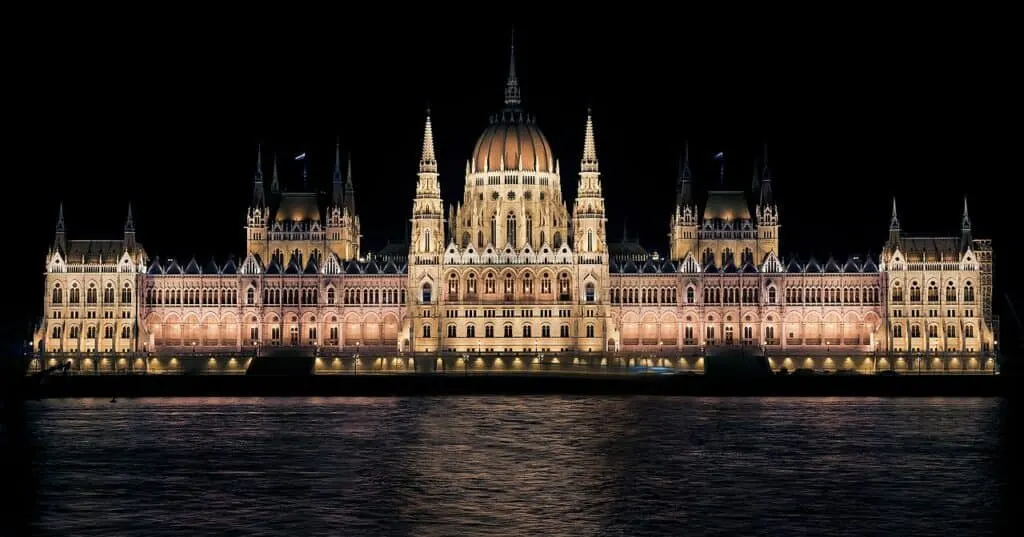
An imposing and striking structure on the bank of the River Danube on the Pest side, Hungary’s Parliament building is a marvel of Gothic and Renaissance Revival architecture. One of the busiest tourist sites across all of Europe, the Parliament is a fully functioning government building.
Completed in 1904, it was envisioned by the architect Imre Steindl and took 17 years to build. The monuments and memorials around the simply magnificent Hungarian parliament building are worth a few hours of your time. If you are able to visit it just after noon, you can also witness a changing of the guards in front of the Parliament.
Stay near the Parliament and other landmarks on the Pest side:
Great Synagogue
Budapest was a true melting point of different civilizations, as can be witnessed in the architecture of the world’s largest synagogue, the Doheny Street Synagogue. Also known as the Great Synagogue, this famous landmark is an interesting study in architecture.
The mid-19th century design is dominated by the Moorish style juxtaposed with that of the Gothic, Byzantine, and Romanesque eras. The Dohany Street Synagogue is part of a complex that also houses the Jewish cemetery, the Jewish Museum, the Holocaust memorial, and the Heroes temple.
During World War II, over 2000 Jews died due to hunger and cold and were buried in the Jewish cemetery. There is also a memorial called ‘Tree of Life,’ which is an homage to the Jews who lost their lives in the Holocaust. You can book a guided tour in order to learn more about the Jewish faith and the building’s history.
Stay within the Jewish Quarter of Budapest:
Heroes’ Square
This historical landmark is an important plaza in Budapest as it was constructed in 1869 to celebrate the conquest of the Carpathian Basin and the founding of Hungary 1000 years ago. A UNESCO World Heritage site, the main feature of the Square is the Millennium monument, which is adorned by several columns, statues of prominent Hungarian personalities, and the statue of the Archangel Gabriel as the piece de resistance.
Steeped in history, this is a great starting point for understanding the history of Budapest. In close vicinity to Hero’s Square are some other popular tourist destinations, including the Museum of Art and Andrassy Avenue.
Andrassy Avenue is reminiscent of Paris’s Champs de Elysees, as the boulevard is dotted with upscale stores and restaurants and should be part of your itinerary, whether you have a shopping budget or not. We enjoyed strolling along, people-watching, and admiring the elegant mansions and buildings which house embassies and apartments.
Stay close to Andrassy Avenue in Budapest:
City Park
The City Park, or Városliget, is a beautiful park located centrally in the city right next to Heroes Square, a UNESCO World Heritage site. Before this beautiful park was designed in its present form, the area used to be a grazing pasture for oxen for over 500 years. The meadow was enhanced with trees and walkways in the 18th century before it became the world’s first public park in the 1800s.
The park was also the location for Hungary’s Millennium celebration in 1896, and the Vajdahunyad Castle is a remnant from the exhibition. It is easy to spend more than a couple of hours in this green gem, as you can picnic, stroll leisurely across the walkways and take pictures of the beautiful buildings around the area.
This urban oasis also houses the Budapest Zoo and Botanical Garden, Szechenga baths, Museum of Transportation, and many small restaurants dotted through the park.
The Budapest Zoo was the first of its kind in the world and now attracts over a million visitors a year. Because it covers a very large area of the City Park and houses around 700 species of animals, a visit to the zoo can easily take a few hours and is a necessary stop for families with children visiting the city.
The City Park is easily accessible by metro, bus, or a short walk from the nearby monuments, so make sure you include this in your list of attractions to visit in Budapest.
Stay in this area:
Vajdahunyad Castle
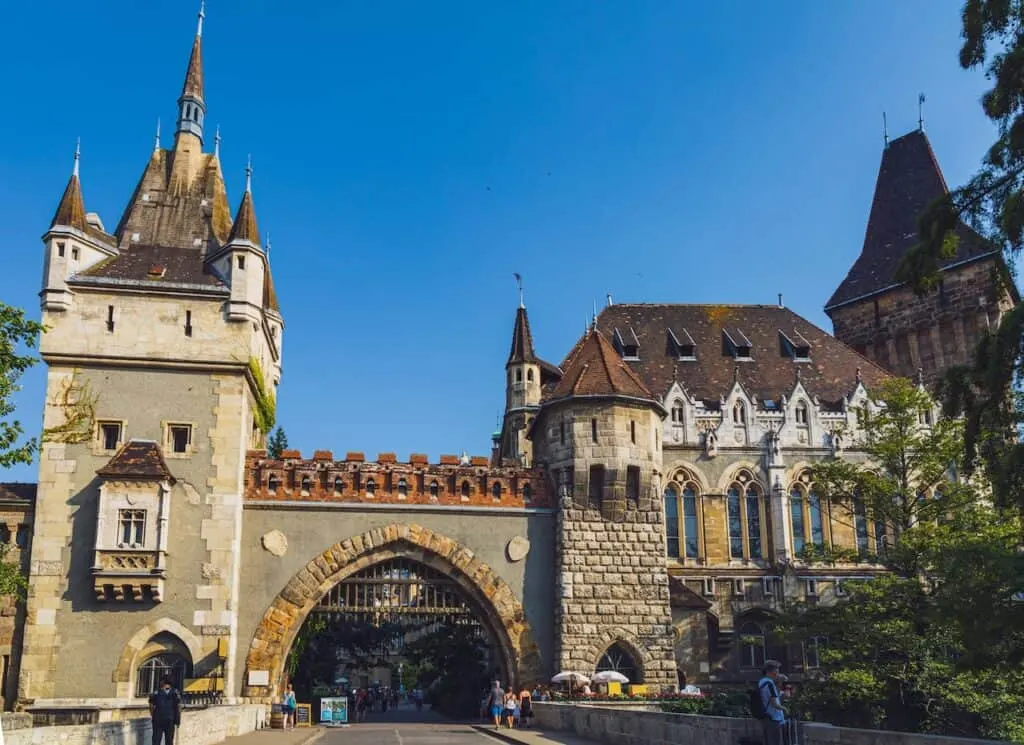
Another stunning landmark in Budapest’s arsenal of spectacular monuments is the Vajdahunyad Castle, located near Heroes’ Square. This breathtaking structure was built for the Millennium Exhibition in 1896 and is an eclectic blend of architectural styles, including Baroque, Romanesque, Renaissance, and Gothic. It was supposed to be destroyed after the exhibition, but the immense popularity of the wonderful structure made it a permanent feature in the Pest part of the city.
This fairytale-like castle looks as if it dates from the Middle Ages, but it was actually built in the 19th century. This doesn’t take away from its immense charm, and it continues to be a hugely popular attraction for both locals and tourists in Budapest. For an even more romantic experience, visit the castle at night when it is lit up and looks stunning.
Stay close to the castle:
Museum of Fine Arts
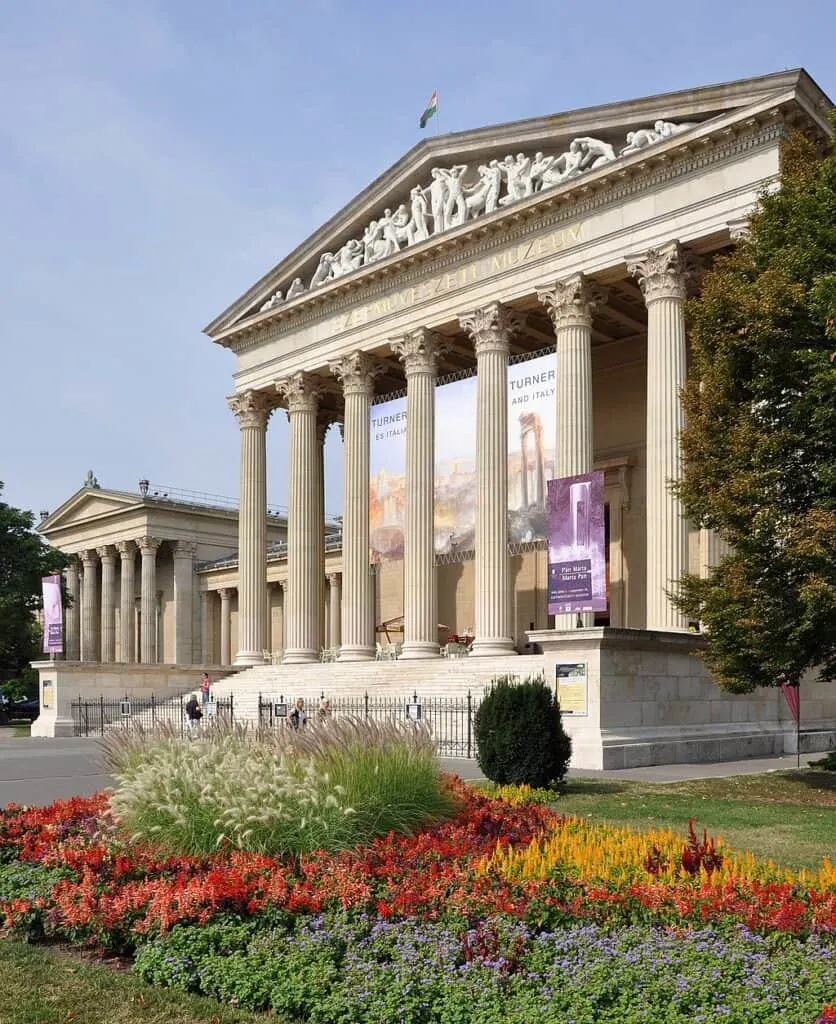
A visit to Budapest cannot be complete without visiting the Museum of Fine Arts, a neo-classical style building with beautiful mosaic floors, marble columns, and cavernous vaults. The Museum houses a very large collection of European and Hungarian artworks from the periods of the 13th century to the 18th century.
The Museum also has permanent exhibitions of ancient Egyptian artifacts and antique Roman and Greek sculptures, which makes it very easy to spend more than a few hours here.
Thermal Baths
All your walking and sightseeing in Budapest can be exhausting, so save time to relax and head to one of the most quintessential experiences of Budapest: a rejuvenating soak in one (or more) of its world-famous baths and spas. As the city lies on a fault line, it has access to a huge reserve of spring water that gushes forth around 123 thermal springs of hot mineral-rich water.
Thermal baths have been enjoyed by the locals for thousands of years and are an important and long-standing part of Budapest’s history. Not only are they believed to have healing properties, but they also act as places for people to relax and socialize.
It is no wonder that Budapest is known as the ‘City of Baths’ with around 12 thermal baths around the city. Each of them has a unique façade, ranging from ornate and Romanesque to luxurious and hammam-like, reminding you once again of the many civilizations that helped shape Budapest. You will be spoiled for choice when it comes to these complexes, as they cater to all kinds of budgets and travelers, which makes them a must-visit attraction.
The largest and most famous of Budapest’s thermal baths is the Szechenyi Baths in City Park. It is fashioned in the Neo-Baroque style and is massive, with a total of 15 indoor and three outdoor pools. Melt away your exhaustion as you soak in the warm water while people-watching and enjoying your beautiful surroundings.
The Szechenyi thermal baths are a popular tourist attraction which means they can get extremely crowded, but that shouldn’t deter you from visiting this stunning complex. Just plan accordingly so you can enjoy the facilities to the fullest. Plan to spend a couple of hours so you can deeply appreciate this experience, especially in the outdoor pools. For full day spa ticket, click here.
St. Stephen’s Basilica
One of Budapest’s most famous landmarks, the St. Stephen’s Basilica is centrally located on the Pest side, which makes it easily accessible via multiple transport options. Named after Stephen, who was the first King of Hungary, this Roman Catholic church is a popular destination for tourists, thanks to its Neo-Classical exterior and stunning interiors.
Visitors can also go up the tower to the terrace at the dome’s base to witness some breathtaking views of the city. For an extra special experience, visit the Basilica, where one of the many regular musical performances is being held.
To better understand the frescoes and history of the church, you can book a guided tour which is available in both English and Hungarian. As it is a religious site, it is important to remember to cover your knees and shoulders in respect when you enter the Basilica.
Stay near the Basilica:
Central Market Hall
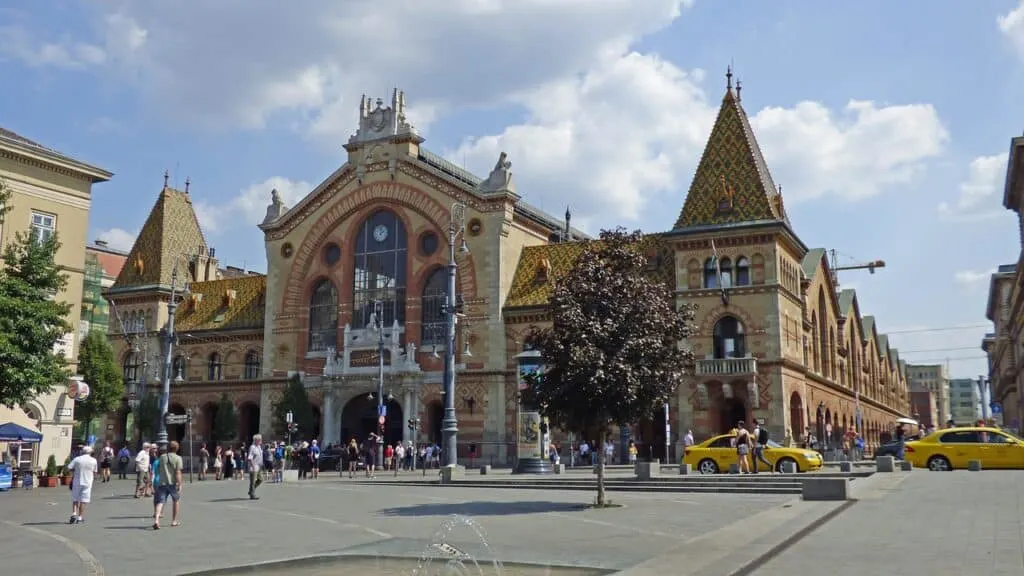
There is no better way to better understand the culture and history of a new city than to get a taste of the local cuisine and delicacies. The best place to do this is at Central Market Hall, also known as the Great Market Hall. This indoor venue is a magnificent Neo-Gothic-style building built over three stories with around 100 stalls.
Along with being a top attraction for tourists, the market is also frequented by locals, who stock up on fresh, locally-grown produce. Central Market Hall is heaven for food lovers, as it is one of the best places to sample Hungarian cuisine like Goulash and Langos. And if you are in the mood for some retail therapy, then you will not be disappointed by the big selection of traditional wares and souvenirs that you can buy to remind you of this magnificent city.
Another option for window shopping and people-watching is walking down Váci Utca, a pedestrianized street that runs the length between the Central Market Hall and Vorosmarty Square. Váci Utca is considered one of the most beautiful walking streets in the world and is peppered with restaurants, stores, and bars. The souvenirs are priced differently in each shop, so do your research if you plan on purchasing something.
Stay near the Central Market Hall:
Hungarian Opera
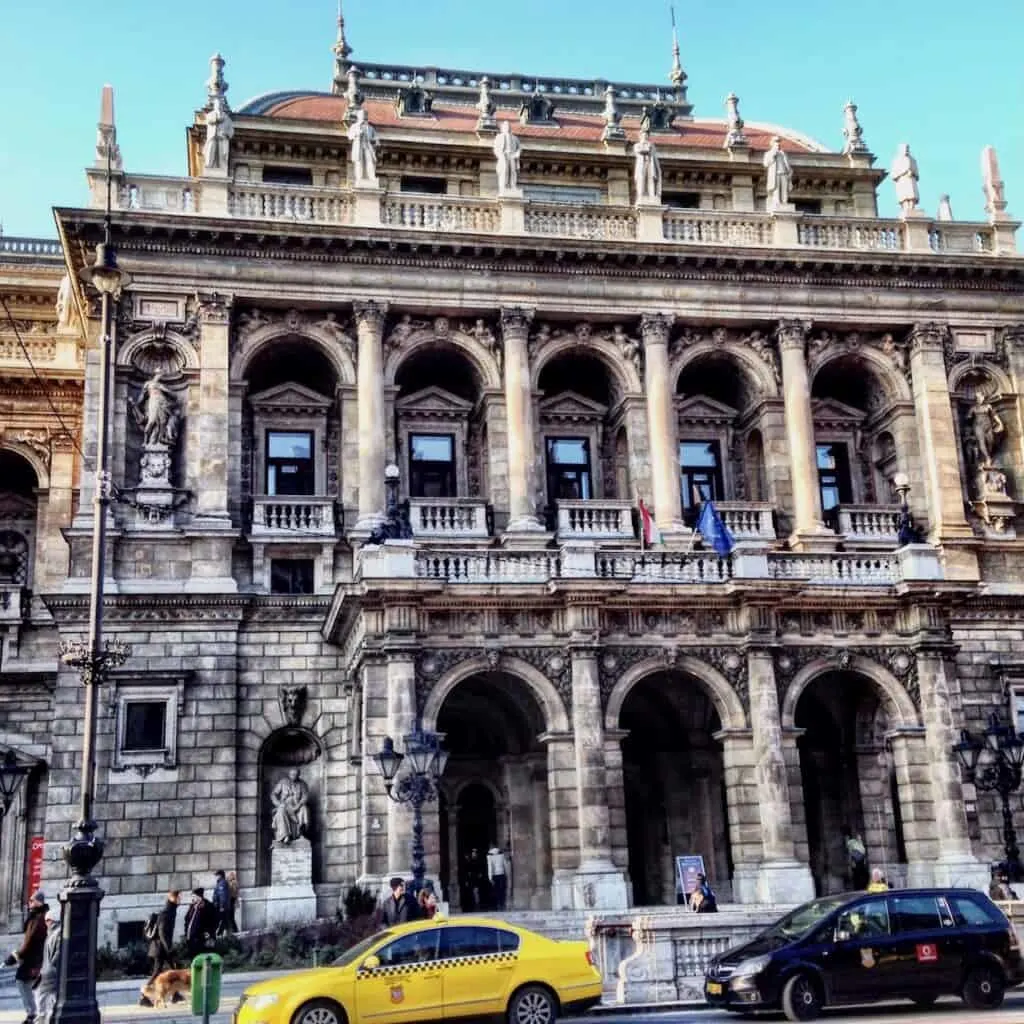
The Hungarian State Opera House was commissioned by Emperor Franz Joseph and was inaugurated in 1884 for the Millennial Celebrations. It is situated in the center of Andrássy Avenue and is one of Budapest’s most famous landmarks.
You don’t have to be an opera music aficionado to appreciate the stunning beauty of this Budapest landmark, with its fusion of Neo-Renaissance and Baroque design. Its gilded interiors are opulent and grandiose, a testament to the Austro-Hungarian empire. The building features statues of legendary composers like Beethoven and Mozart. The ceilings are adorned with frescos and paintings, which add to the opulence of this historic structure and make for some stunning photos.
Stay near the Opera House:
Visiting These Landmarks in Budapest Will Affect You Long After Your Trip Ends
Budapest is my favorite capital city in Europe. Culturally, it will embrace you with rich artistic traditions and vibrant coffee house culture. I love it because it is gritty as well as grand, its beautiful visage broken and repaired.
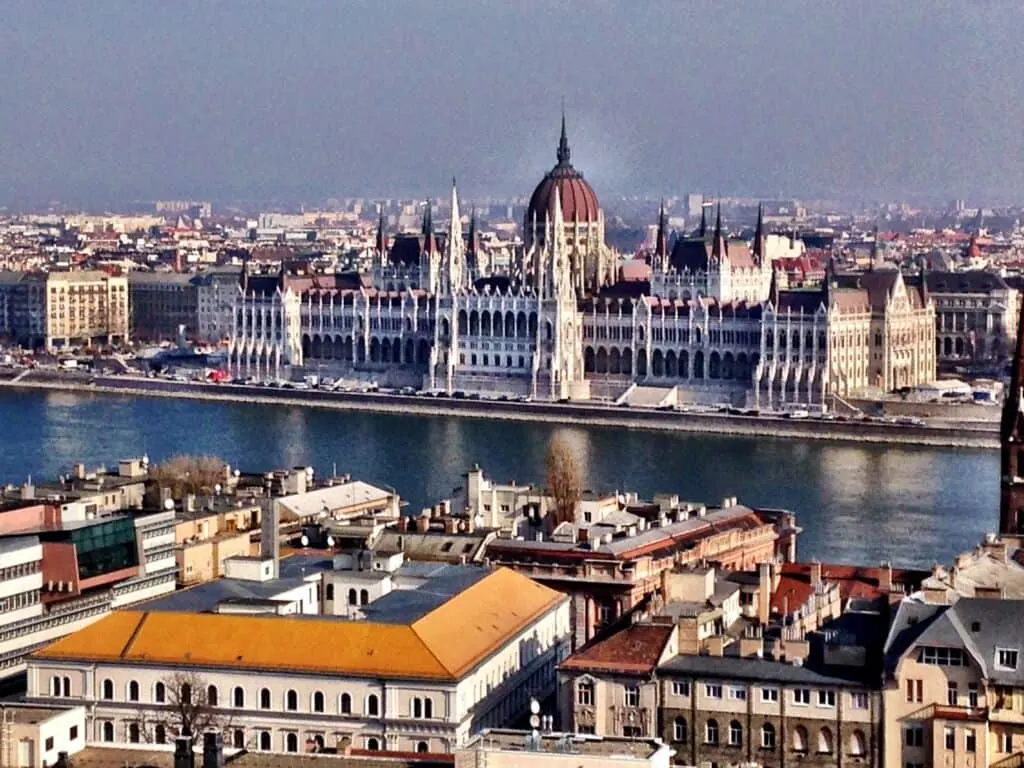
A magnificent and poignant history is told by Budapest’s prominent landmarks, its topography and layout, and the architectural grandeur of its buildings. I hope you love this city as much as I do!
Tips for Trip Success
Book Your Flight
Find an inexpensive flight by using Kayak, a favorite of ours because it regularly returns less expensive flight options from a variety of airlines.
Book Your Hotel or Special Accommodation
We are big fans of Booking.com. We like their review system and photos. If we want to see more reviews and additional booking options, we go to Expedia.
You Need Travel Insurance!
Good travel insurance means having total peace of mind. Travel insurance protects you when your medical insurance often will not and better than what you get from your credit card. It will provide comprehensive coverage should you need medical treatment or return to the United States, compensation for trip interruption, baggage loss, and other situations.Find the Perfect Insurance Plan for Your Trip
PassingThru is a participant in the Amazon Services LLC Associates Program. As an Amazon Associate I earn from qualifying purchases.
To view PassingThru’s privacy policy, click here.

